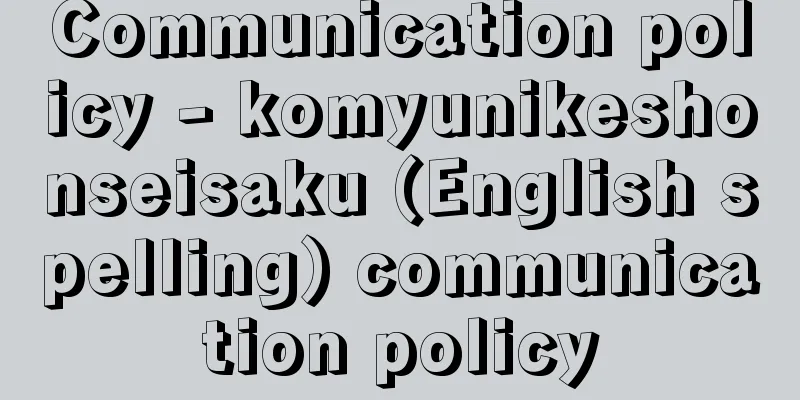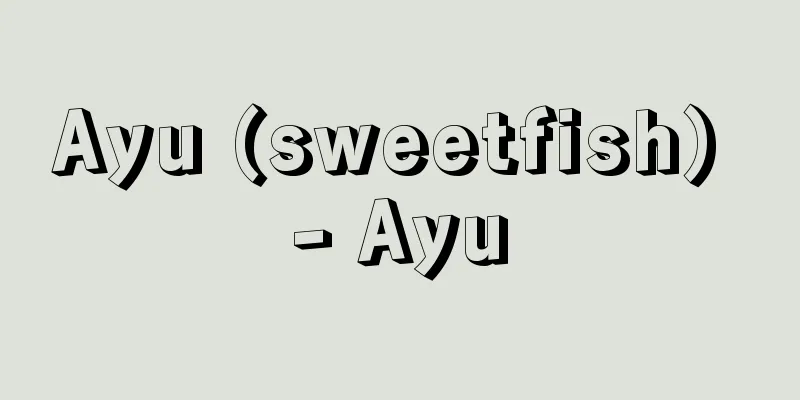Myogyodo

|
It was a department of the Daigakuryo, but had a general or preparatory character. It studied Chinese classics, and all 400 students stipulated in the Personnel Order belonged to it. There were three instructors, and later it was increased to five. Students were expected to learn Confucianism, which was necessary for Ritsuryo officials, by studying works such as "Zhouyi", "Shangshu", "Zhouli", "Yili", "Liji", "Mao Shi", "Spring and Autumn Annals of Zuo", "Book of Filial Piety", and "Analects". Students first learned to read textbooks aloud from a professor, and then listened to lectures from a professor and assistant professor. Students were given one day of leave every ten, but they had to take the doctor's exam on the day before the leave, and at the end of the year they took the exam for Daigakucho and assistant, where they were asked about the Eight Articles of Great Meaning, and those who were familiar with two or more classics were recommended for official positions. Famous people who specialized in studying the Classical Chinese Way include Kukai, Fujiwara no Mimori, and King Tadatei, and according to the biography of Kukai, he traveled to the University, read the Mao Shi, Zuo Zhuan, and Shangshu about the direct lecture on Umaki Kiyonari, and consulted Dr. Okada on the Zuo Shi Chunqiu. Up until the 9th century, there were many people of humble origins among the instructors of the Classical Chinese Way, but by the end of the 10th century, the Nakahara and Kiyohara families were established as families of Doctors of the Classical Chinese Way. Furthermore, after the instructor's lecture on the scriptures, students were required by law to take the Myokyo examination, which was an examination for the position of Shikibu-shoto or assistant priest. By the beginning of the 10th century, however, it became the rule that only those who had attained the Myokyo qualification could take the Myokyo examination. [Morita Tei] "Research on the Ancient Educational System by Momo Hiroyuki (1947, Meguro Shoten)" [Reference] |Source: Shogakukan Encyclopedia Nipponica About Encyclopedia Nipponica Information | Legend |
|
大学寮の一学科であるが、一般科ないし予科的性格をもつ。中国の経学(けいがく)を修めるもので、職員令(しきいんりょう)に規定された400人の学生すべてがここに所属する。令制教官は3名、のち5名に増員された。『周易(しゅうえき)』『尚書』『周礼(しゅらい)』『儀礼』『礼記』『毛詩』『春秋左氏伝』『孝経(こうきょう)』『論語』などを学び、律令官人に必要な儒教思想を身につけることを求められた。学生はまず音博士(おんはかせ)について教科書の音読を学び、ついで博士、助教について講読を受けた。旬ごとに1日の休仮(暇)(きゅうか)を与えられたが、休仮の前日に博士の考試を受けねばならず、また1年の終わりには大学頭、助の試を受け、大義八条を問い、二経以上に通ずるものは官吏に推薦された。明経道を専攻的に学んだ著名人に空海、藤原三守(みもり)、忠貞王などがおり、空海の伝には、大学に経遊し、直講味酒浄成(うまききよなり)について『毛詩』『左伝』『尚書』を読み、岡田博士に『左氏春秋』を問うた、とある。9世紀段階までの明経道教官にはさまざまな卑姓出身者が知られるが、10世紀末になると中原、清原両氏が明経道博士家として固定してくる。 また学生は教官の経書講説を終えると式部省頭、助の試である明経試を受けることが令の規定であるが、10世紀初めに至ると、明経得業生(とくごうしょう)となったものが明経試を受けるのが原則となった。 [森田 悌] 『桃裕行著『上代学制の研究』(1947・目黒書店)』 [参照項目] |出典 小学館 日本大百科全書(ニッポニカ)日本大百科全書(ニッポニカ)について 情報 | 凡例 |
Recommend
Turn yourself in
A person who has committed a crime voluntarily re...
Quraish tribe - Quraish (English spelling)
A tribe that ruled Mecca in Arabia from the end of...
Location Report - One Way
…(5) En-route air traffic control: This is the ai...
Elias Ashmole
1617‐92 A British antiquarian, he was particularly...
Lake Hamana
A lake in the southwest of Shizuoka Prefecture. I...
Maxwell's equations
This is the most fundamental equation that descri...
Capitano del Popolo (English spelling)
The title of the person who represented the citize...
Calcite - houkaiseki (English spelling) calcite
CaCO 3 . A type of anhydrous carbonate mineral. He...
Reverse contemplation of good fortune - Engi no Gyakkan
…On the other hand, if there is no birth, there i...
Isometric contraction
…The latter is characterized by the fact that the...
Pala d'oro (English spelling)
...It is a type of screen (made of wood, metal, o...
Teutonic
...The origin of the name Germanic is unknown, bu...
Sri Vijaya Rajasinha (English spelling)
…As a result of the Napoleonic Wars, the coastal ...
Indian Civil Service
…From Hastings' time onwards, the Governor-Ge...
Frombork (English spelling)
A small city in the Elbląg Voivodeship in northern...









